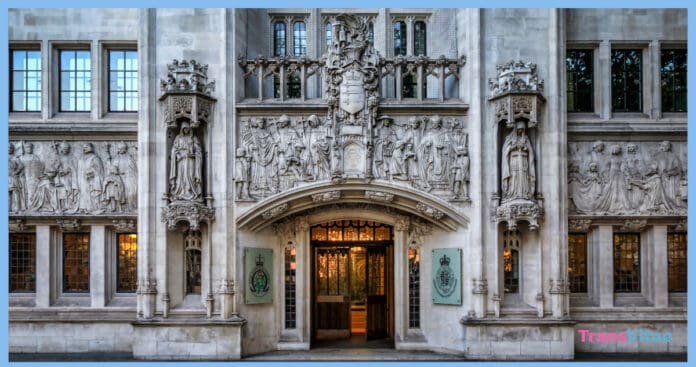In a landmark decision with sweeping implications for transgender rights in the United Kingdom, the UK Supreme Court has ruled that the legal definition of “woman” under the 2010 Equality Act refers specifically to biological sex, not gender identity—even in cases where a transgender woman holds a Gender Recognition Certificate (GRC).
The judgment, released Wednesday in an 88-page decision authored by Lord Hodge, Lady Rose, and Lady Simler, concluded that the terms “sex,” “man,” and “woman” in the Equality Act are binary and rooted in biological characteristics. “The definition of sex in the Equality Act 2010 makes clear that the concept of sex is binary, a person is either a woman or a man,” the judges stated.
They added that while the word “biological” does not explicitly appear in the legislation, its meaning is understood through “the plain and unambiguous words” of the Act, which “correspond with the biological characteristics that make an individual a man or a woman.”
The Case and Its Impact
The case was brought by For Women Scotland (FWS), which challenged guidance issued by the Scottish Government following a 2018 law aimed at increasing female representation on public boards. The guidance stated that transgender women with GRCs counted toward the 50% female quota. FWS argued this redefinition exceeded the Scottish Parliament’s authority and blurred legal distinctions meant to protect sex-based rights.
Today’s ruling sides with FWS, invalidating the Scottish guidance and stating plainly, “A person with a Gender Recognition Certificate in the female gender does not come within the definition of a ‘woman’ under the Equality Act 2010, and the statutory guidance issued by the Scottish ministers is incorrect.”
Nine Reasons for the Ruling
Lord Hodge outlined nine key reasons behind the decision, three of which were emphasized in the summary:
- Group-Based Protections: The Equality Act provides protections on the basis of sex and gender reassignment, but these are distinct categories meant to offer clarity and targeted protections—not overlap.
- Clarity and Consistency: Interpreting “sex” as including certificated gender would create confusion in the application of the law and undermine its intent.
- Avoiding Incoherence: Including trans women in the definition of “woman” under sex-based protections would create “heterogeneous groupings” and make the Act “incoherent and impracticable.”
The judges affirmed that sex-based protections in areas such as single-sex services are designed around biological sex. “Provisions that refer to protection for women necessarily exclude men,” the ruling stated. “Men and women are on the face of the definition only differentiated as a grouping by the biology they share with their group.”
Response from Trans Communities and Advocates
The ruling has been met with concern by transgender advocates and human rights organizations. Groups like Amnesty International previously warned that excluding trans women from sex-based protections could set a dangerous precedent and exacerbate discrimination.
“This is a painful blow to our community,” said Ellie Harrison, spokesperson for Trans Rights UK. “It sends the message that our identities—even when legally recognized—don’t matter under the law. It’s a setback, not just in policy, but in dignity.”
While the Supreme Court emphasized that the ruling should not be seen as a “triumph for one group at the expense of another,” many in the LGBTQ+ community fear this decision will be used to justify further restrictions on transgender inclusion.
As the legal framework moves forward, the transgender community, their families, and allies are left to grapple with what the decision means for equal access, recognition, and protection in the UK. The full impact of the ruling is likely to unfold over the coming months as government bodies, institutions, and legal advocates adjust to the court’s interpretation.


